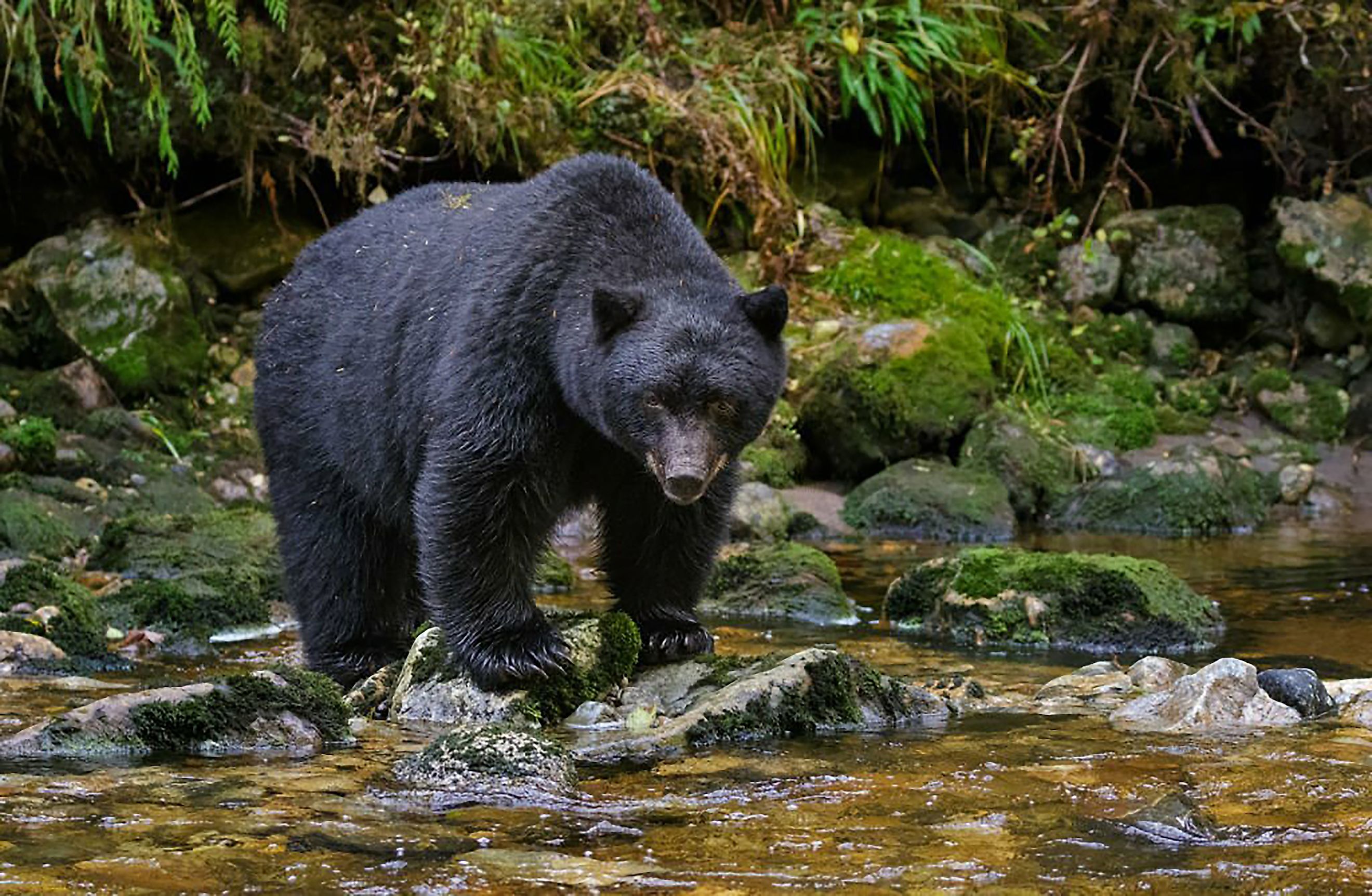
The 11 Deadliest Animals in Maryland
Venture into the unexpected wilds of Maryland, a state where the gentle landscape belies a secret world of formidable animals. Beyond the charming facade, a fascinating array of animals lurk, commanding both caution and reverence. From stealthy predators to surprisingly feisty creatures, this list unmasks the Old Line State’s most daunting inhabitants—and redefines the notion of "deadly" to include those who rule the food chain, even if they don’t necessarily have humans in their sights.
Eastern Copperhead Snake
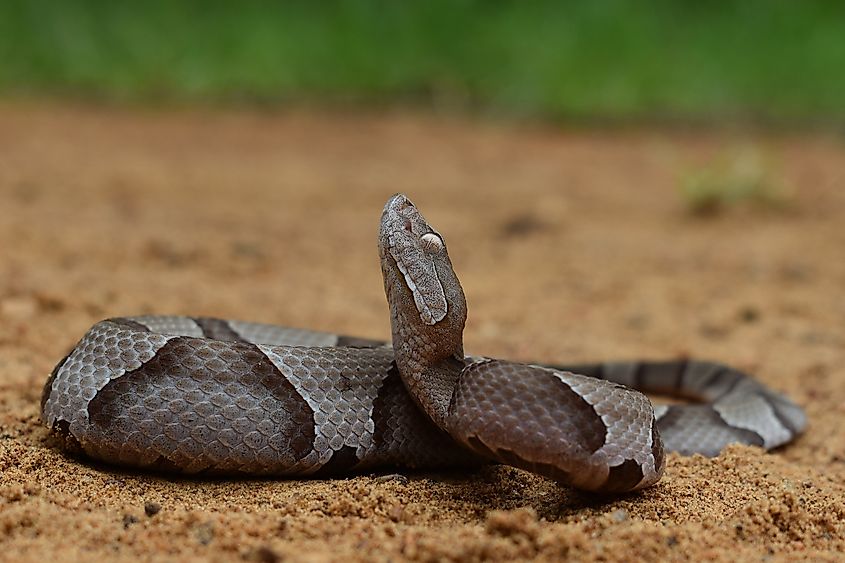
Meet the eastern copperhead snake: a venomous pit-viper that’s a master of stealth and strategy. Found along the eastern coast of the United States, this serpent is an ordinary sight in Maryland, where its bites are rarely lethal but still pack a punch. Recognizable by its tan hue and notable hourglass markings, the copperhead’s broad head and piercing gaze commands respect. While its venom is relatively mild compared to other vipers, don’t be fooled—these snakes are precision hunters that reserve their venom for unsuspecting prey. When they do bite humans, it’s often a ‘dry bite,’ a warning shot with little to no venom. Still, don’t take any chances—a bite from the eastern copperhead requires immediate medical attention! As the most common culprit behind treated snake bites in the US, the eastern copperhead is not to be underestimated.
Black Widow Spider
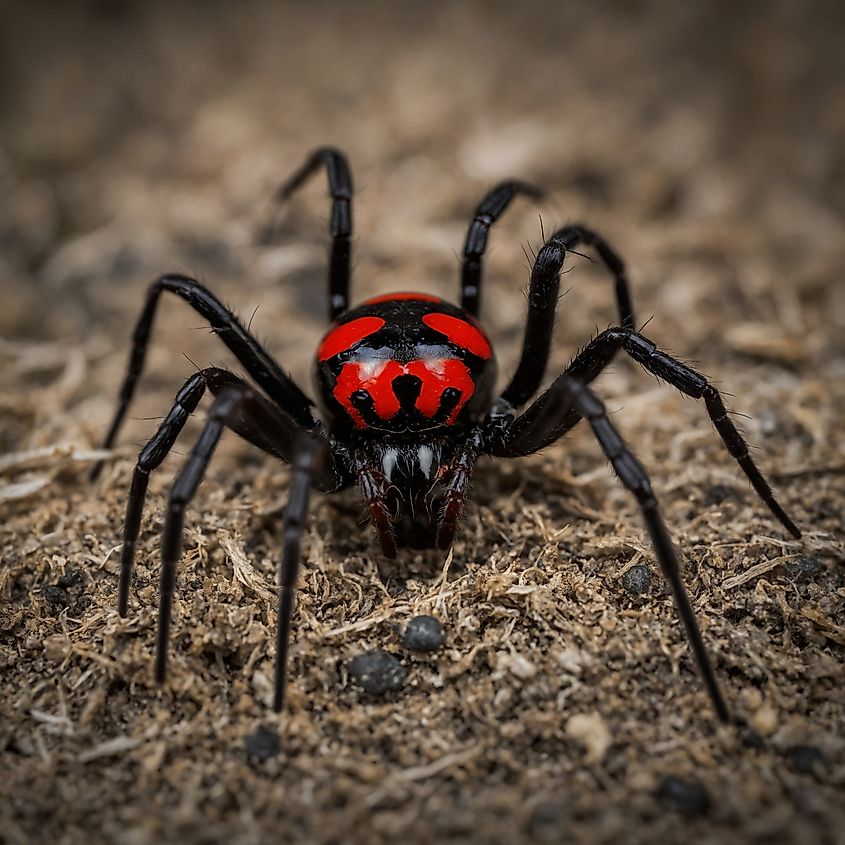
Enter the realm of the black widow spider, Maryland’s most venomous arachnid and a legend in the spider world. A sleek, black body and peculiar hourglass shape define this recognizable and often feared spider. However, the eerie reputation the black widow has gained acts as a defense mechanism in itself: this spider is a shy and non-aggressive soul, only striking when its web is disturbed. Yet when it does, beware! Its venom packs a punch up to 15 times more potent than rattlesnake venom, a dangerous bite that commands respect. In a curious twist, adult humans who fall victim to its fangs often emerge unscathed, with no serious consequences or even death. In any case, it is important to understand that a bite from a black widow still requires medical attention. It is always better to err on the side of caution when dealing with this dark, eight-legged enchantress.
Black Bear
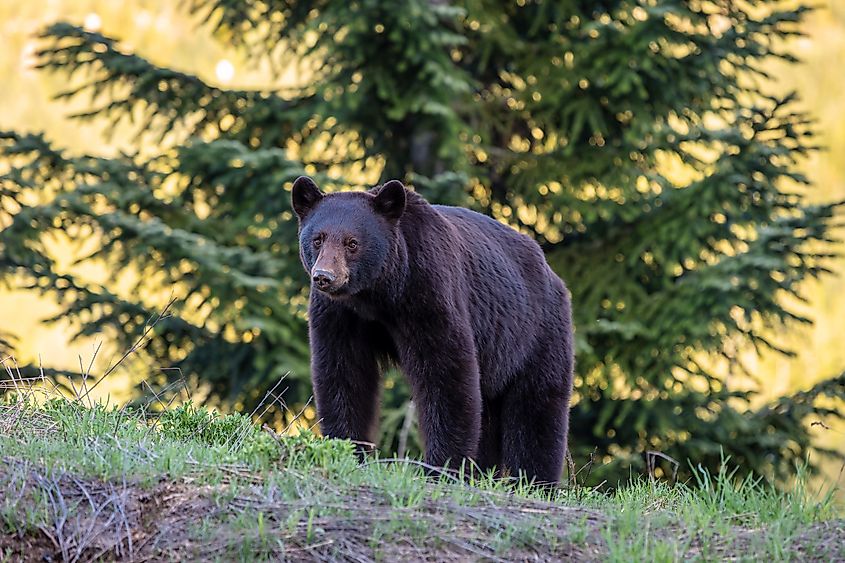
A young black bear standing amidst the lush forest landscape.
Deep in the heart of Maryland’s forests, a powerful giant roams, striking a balance between sheer power and stealthy resourcefulness. The black bear is Maryland’s largest predator, a definite force to be reckoned with as its size and strength can unleash overwhelming fury. Adults can weigh up to 500 lbs and reach lengths of 6 feet; their broad shoulders and muscular build are a testament to their unyielding presence. Their sleek, black coats glisten in the sunlight, occasionally accented by a V-shaped white marking on their chest. While these majestic predators tend to shy away from human encounters, they will not hesitate to assert their dominance if threatened or if their cubs are in harm’s way. Western Maryland’s wooded expanses are their domain, but they’ve also been known to venture into human-populated areas in search of sustenance. With a curious blend of strength and cunning, the black bear serves as a reminder that even in the most unexpected places, the untamed spirit of Maryland’s nature lurks, waiting to be encountered.
Timber Rattlesnake
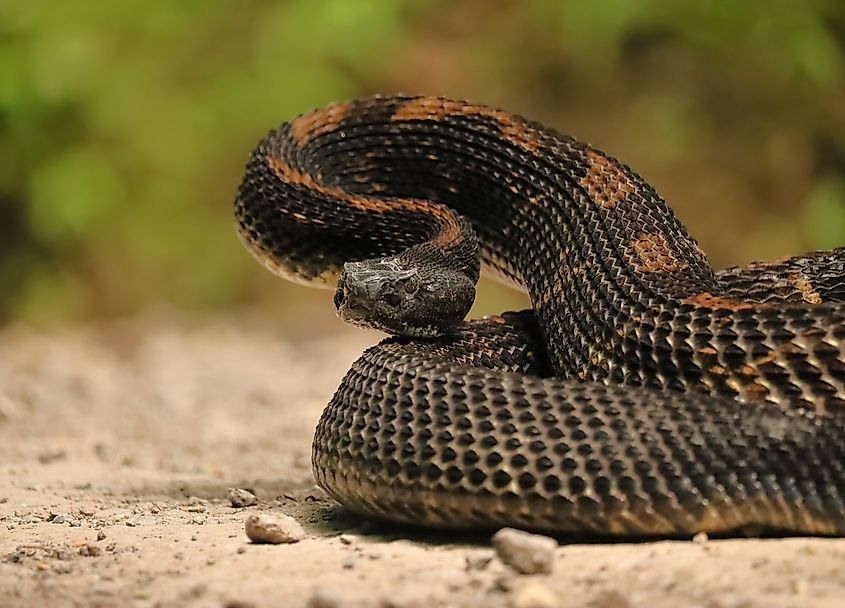
An intimidating serpent coils in the verdant grasslands of Maryland—its presence heralded by an ominous warning: the characteristic rattle of its tail. The timber rattlesnake exudes an intimidating potency, delivering a venomous strike that can prove fatal if left untreated. Its robust, heavy-bodied form is cloaked in a mottled camouflage of brown and black scales, expertly blending with the forest floor. The rattle on the end of its tail, a series of loose, dangling scales, vibrates with a low-pitched hum, a warning signal for incoming threats and granting them a chance to retreat. Timber rattlesnakes are a vulnerable species; their populations are threatened by habitat loss and human development. As a protected species in Maryland, conservation efforts strive to preserve the delicate balance between humans and serpents, ensuring the survival of this magnificent predator. With a reverence for life and respect for the wild, we can coexist with this beautiful reptile, heeding the warning rattle that echoes through the trees, shaking to a rhythm of natural power beyond our reach.
Common Snapping Turtle
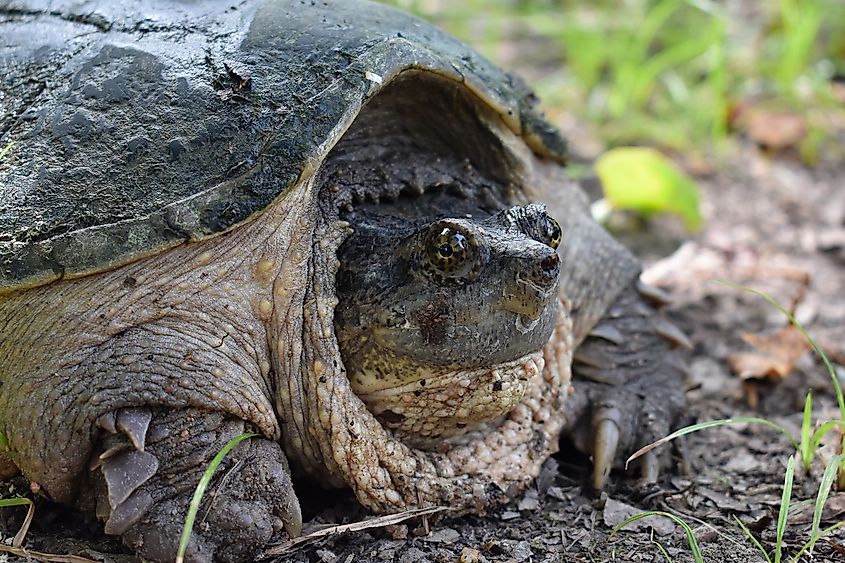
The depths of Maryland’s aquatic areas conceal a reptile whose powerful jaws deliver a devastating bite that can leave humans scarred and vulnerable to deadly infections. The common snapping turtle is a behemoth of Maryland’s wetlands, ruling over ponds, rivers, and swamps with an iron fist, its dominance unchallenged as it preys on unsuspecting fish, invertebrates, and even small mammals. Recognizable by its rugged, moss-covered shell and piercing, beady eyes, this ancient animal appears almost prehistoric, its rough, scaly skin serving as resilient armor as it lurks underneath the waters. An encounter with this aggressive turtle warrants the utmost caution: snapping turtles are more fierce combatants than sullen escapees, erupting into a biting frenzy that can prove disastrous for the unwary. The common snapping turtle is a primordial predator best observed from a safe distance when exploring Maryland’s hydrological ecosystems.
Tick
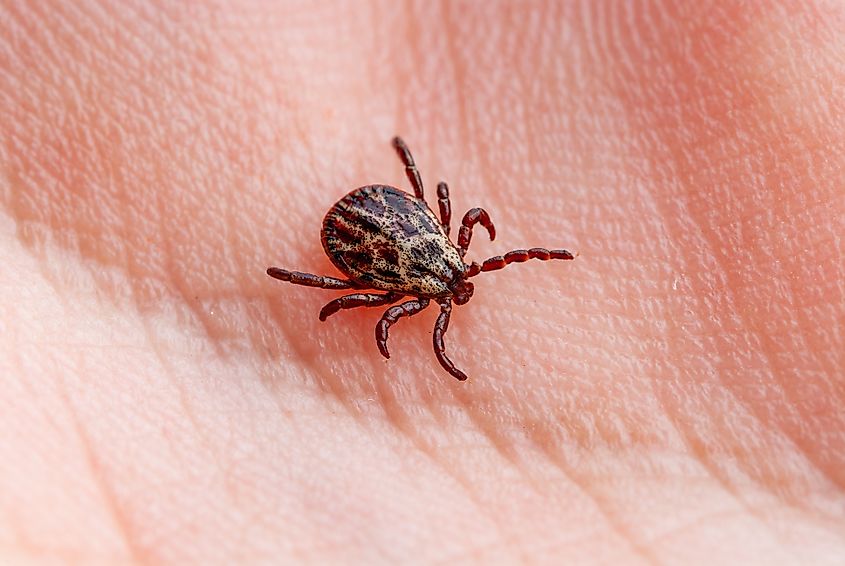
Maryland’s grassy brush conceals a tiny, insidious arachnid that can provoke a debilitating onslaught on humans and animals alike: the tick. Though unassuming and innocuous enough, its small, rounded body and eight legs blend into the wooded, brushy areas it calls home. However, these minuscule monsters are notorious disease carriers, their bite transmitting the likes of Lyme disease, wreaking havoc on one’s long-term health if left untreated, causing symptoms such as fever, chills, and headache, as well as more severe consequences like arthritis, heart issues, and neurological problems. With a penchant for latching onto unsuspecting hosts, ticks are the ultimate hijackers, using their tiny teeth to tap into the bloodstream, releasing a torrent of pathogens. As warmer months approach, outdoor enthusiasts need beware; the ticks’ tiny forms are camouflaged, hidden amongst the underbrush, and waiting to strike upon unsuspecting victims.
Culex Mosquito
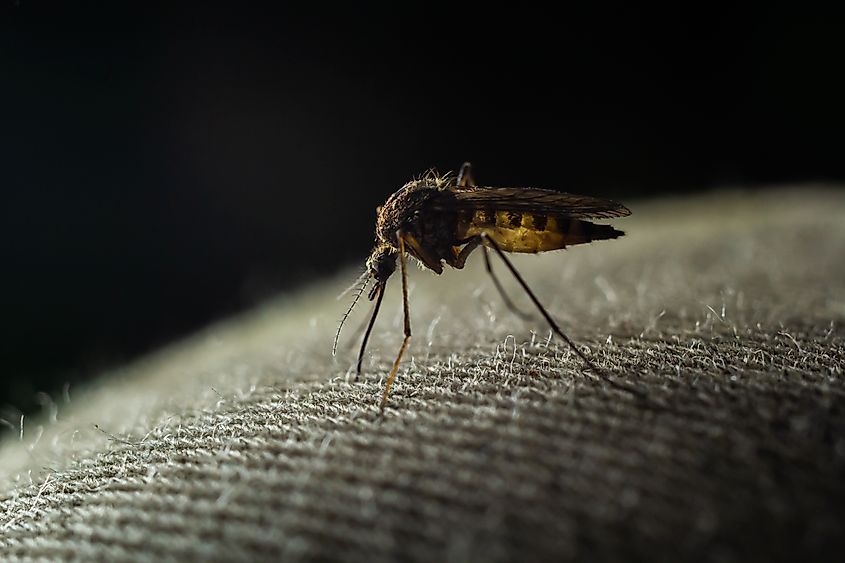
The culex mosquito thrives in the areas of Maryland where there are high levels of humidity or stagnant water, from the swamplands of Birds Mill and Great Cypress to the still sewage drains of major cities like Baltimore and Hagerstown. A presence both seen and felt, there are around 59 species of mosquito in Maryland, with a seemingly harmless appearance of slender bodies, long wings, and patterned markings. A thin frame serves the purpose of a weightless landing upon the plump skin of an oblivious hiker, jamming its dart-like proboscis into the outer layer of the epidermis, extracting blood from blood vessels like the vampiric insect it is. Its presence is thus felt soon after its parasitic visit in the form of a rounded, red inflammation that runs the risk of carrying the deadly West Nile virus, which can wreak havoc on the nervous system, causing symptoms like fever, confusion, paralysis, tremors, and death. The blister of summer months in Maryland yields a surge in mosquito activity and the risk of infectious disease transmission.
Coyote
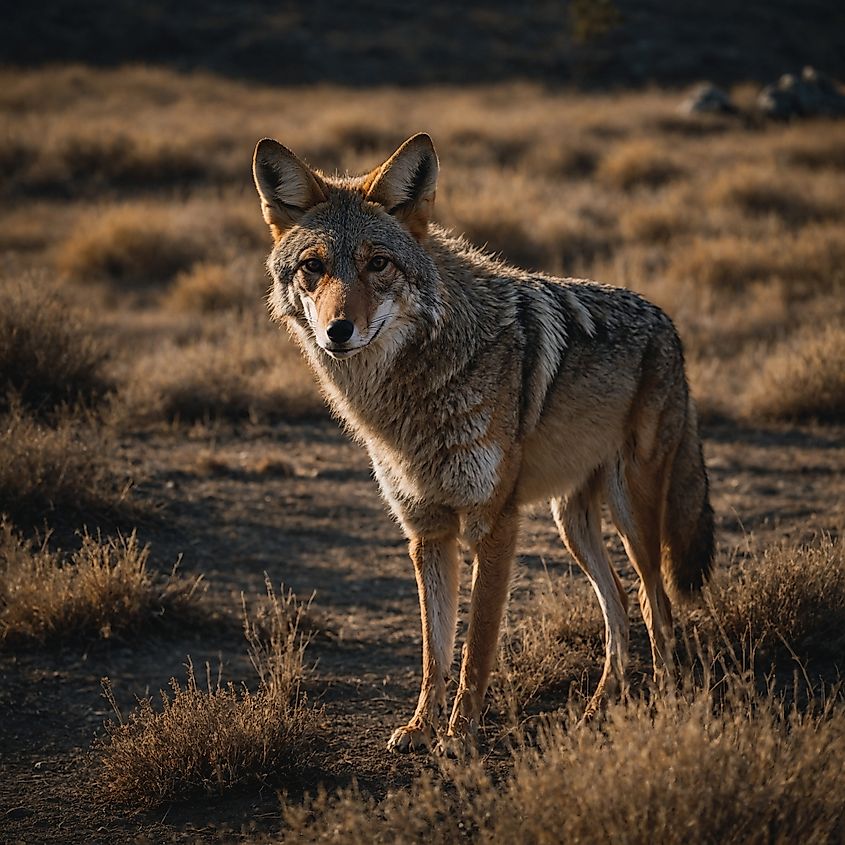
A medium-sized coyote with a slender body, long legs, and a bushy tail.
There is not a more cunning and adaptable predator in the Maryland ecosystem than the feral coyote. These wild canines thrive not only in dense, woody farmland areas but also in urban and suburban environments, posing threats to small pets and occasionally humans. Known for its slender body, pointed ears, and bushy tail, this opportunistic hunter travels in packs with coordinated attacks meant to disarm and confuse untimely prey. As urban expansion encroaches on their natural habitats, coyotes are increasingly spotted in city areas, leading to more frequent human-wildlife encounters. When food is scarce, coyotes become bolder, with their presence sparking fear and concern among residents. With the coyote’s razor-sharp instincts, humans are required to sharpen their own instincts, exercising caution and awareness when dealing with these territorial canines.
Northern Copperhead (Different from Eastern)
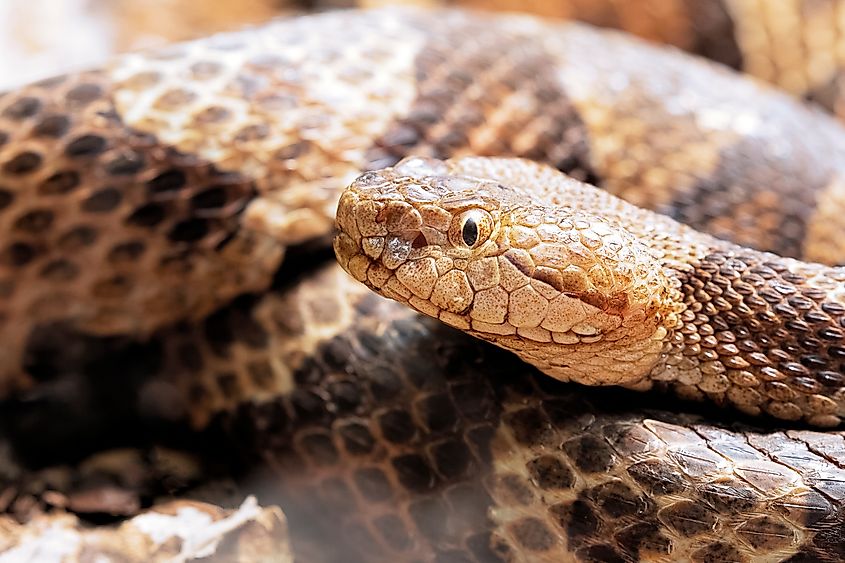
The Northern Copperhead, like its Eastern counterpart, is a venomous snake with distinctive hourglass-shaped markings that range from light to dark brown. While it has slightly lighter coloration, it shares similar behaviors and habitats with the Eastern Copperhead, often found in rocky outcrops and forested areas. The northern copperhead. As a primarily diurnal species in cooler months, the northern copperhead is often active during the day, but as the warmth increases, it becomes nocturnal, increasing the risk of encounters with unsuspecting humans. The bite of the northern copperhead delivers a potent neurotoxin and hemotoxin, causing pain, swelling, and bruising, with systemic effects like nausea, dizziness, and respiratory distress. If left untreated, the venom can lead to more severe complications like renal failure and cardiovascular collapse. Hikers must especially remain vigilant when exploring the Maryland wilderness, aware of the sneaky threat that slithers in and out of the underbrush.
Eastern Box Turtle
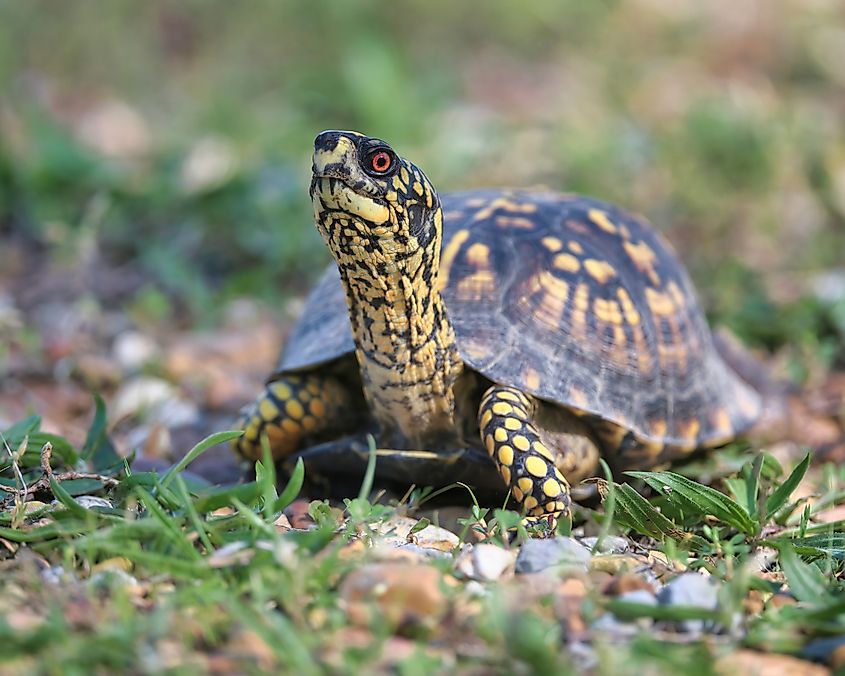
The Eastern Box Turtle, a protected species, is generally harmless with its small size and domed shell. While its diet includes toxic mushrooms that can make its flesh dangerous to predators, the risk to humans is minimal and mostly theoretical. It’s important to admire these turtles in the wild without handling or consuming them, respecting their protected status. A familiar character amidst Maryland’s woodlands and wetlands, this turtle is often mistaken for a harmless pet, but it is essential to leave it in the wild. With its brown and yellow stripes and hinged shell, the eastern box turtle may seem intriguing, but its toxic defense mechanism should be enough to quell any further curiosity. Handling or consuming this turtle results in serious consequences, so it is important to respect its protected status to ensure safety for both the turtle and humans.
Red Fox
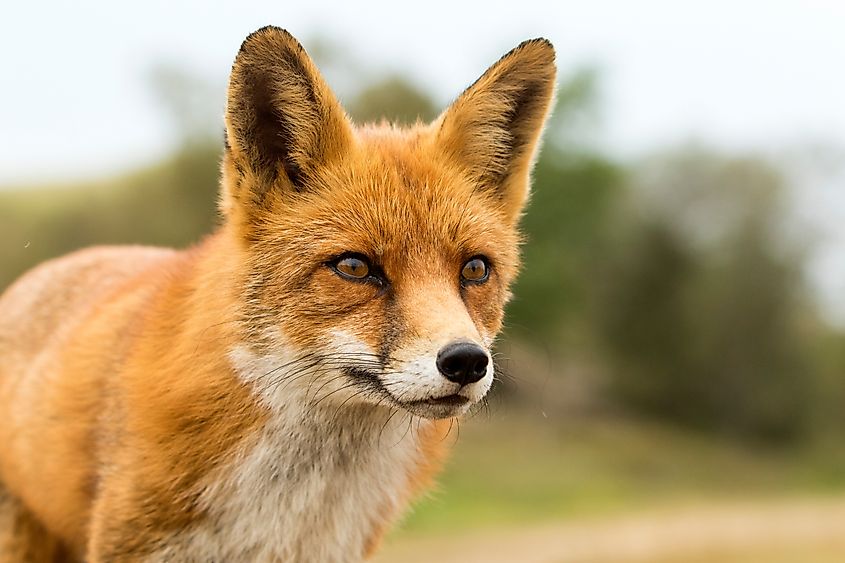
The Red Fox, with its striking reddish-orange coat and bushy tail, is typically a non-threatening predator that primarily targets small animals. While they can be carriers of rabies, cases are rare, and foxes usually avoid human interaction. It’s crucial to exercise caution and avoid contact if a fox appears unusually bold, particularly in areas where rabies is a known concern. If transmitted, rabies can cause horrific symptoms in victims, including hallucinations, paralysis, and a painful death. As urban areas continue to expand, encounters with red foxes are typical, and if they lose their natural fear of humans, they can become a nuisance and a health hazard. With sharp teeth and claws, a rabid red fox can inflict severe injuries, making it essential to exercise the proper precautions if coming into contact with these animals prevalent in the Maryland landscape.
Embracing Maryland's Wild Side Safely
Maryland’s diverse environment is home to a fascinating combination of wildlife, some of which require our respect and caution. While venomous snakes, spiders, and disease-carrying ticks and mosquitos do pose potential threats, many other animals, like black bears and coyotes, generally coexist peacefully with humans. Understanding and appreciating these animals allows for the safe enjoyment of the state’s natural beauty. The wild spirit of Maryland can be embraced while prioritizing the safety of the people and creatures that share the ecosystem.











